What Animals Live In Siberia?
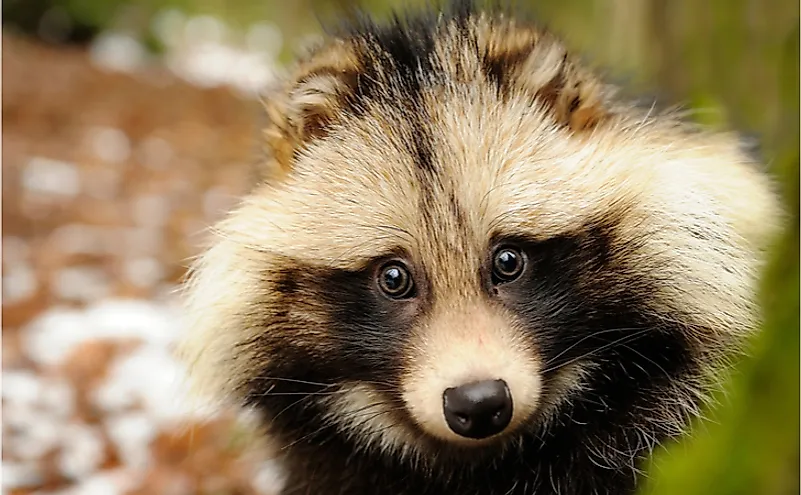
The extensive geographical region of Siberia, a part of modern Russia, is known for its extreme climate, one of the coldest in the world. The Siberian territory extends from the east of the Ural Mountains in the west to the Pacific coast in the east. From north to south, it stretches from the Arctic Ocean to north-central Kazakhstan and Russia's borders with Mongolia and China. Vegetation in this vast landscape is primarily taiga with a tundra belt north of the Arctic Circle and temperate forest south of the taiga. Despite the harsh climate prevailing in Siberia, and limited vegetation, Siberia houses a diversity of animals including the Siberian tiger. Below is a list of some of these species.
10. Siberian Tiger -
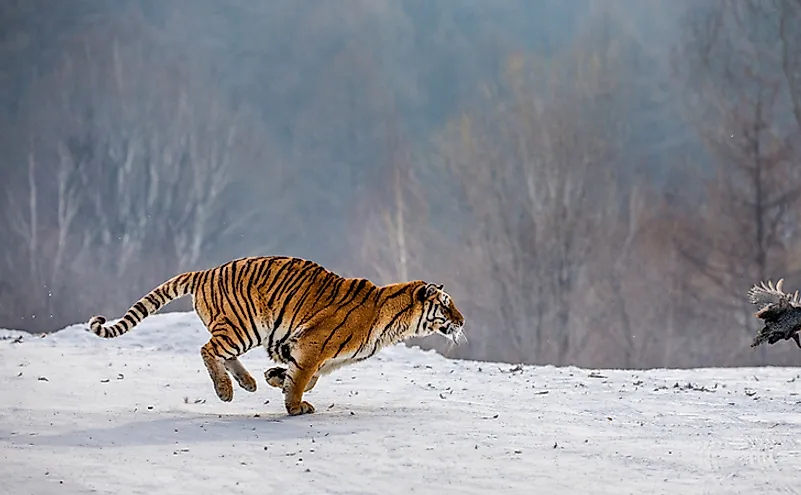
The Siberian tiger or Amur tiger is perhaps the most iconic species found in the remote wilderness of Siberia. It is scientifically called Panthera tigris tigris and is the largest tiger subspecies. This species once ranged throughout eastern Asia but has a highly restricted range today in the Russian Far East and Northeast China. It is an endangered animal with only a few hundred surviving individuals. In Siberia, this tiger is primarily found in the Sikhote Alin mountain region in Primorye Province. Heavy poaching and habitat loss are the biggest threats to this tiger subspecies.
9. Siberian Chipmunk -
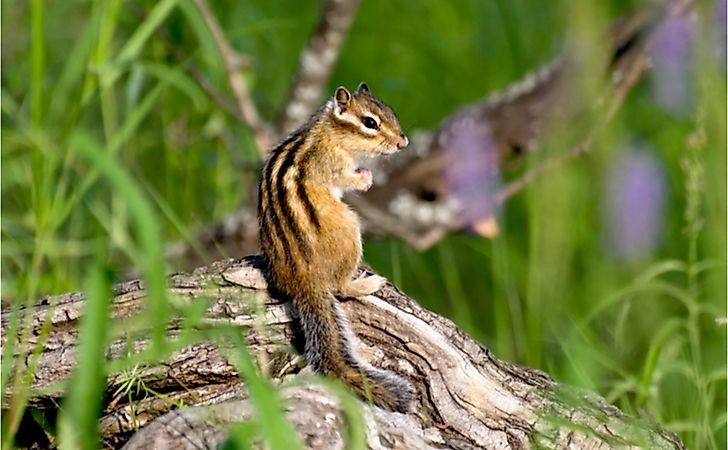
The tiny Eutamias sibiricus ranges across northern Asia from Central Russia to Japan. It is the only chipmunk found outside North America. It was introduced in Europe as a pet in the 1960s and soon became an invasive species in many European countries. It can survive in a wide variety of environments ranging from coniferous forests to agricultural lands. It lives in loose colonies where each individual has its range. It is an omnivore that feeds on Siberian pine seeds, insects, birds, reptiles, fruit, fungus, and more.
8. East Siberian Brown Bear -
The Ursus arctos collaris is a brown bear subspecies ranging from the Yenisei river in eastern Siberia to northern Mongolia. These bears feed on mountain hares and ungulates and unlike other bears have no love for honey. They are bolder than their European counterparts and often invade human camps in search of food.
7. Raccoon Dog -
The Nyctereutes procyonoides is a canid found in Siberia and some other parts of East Asia. Despite its name and similarity in appearance to raccoons, this animal is closest to true foxes. It is the only canid known to hibernate during the winter. It helps it survive the extremely cold winters in its habitat.
6. Amur Leopard -
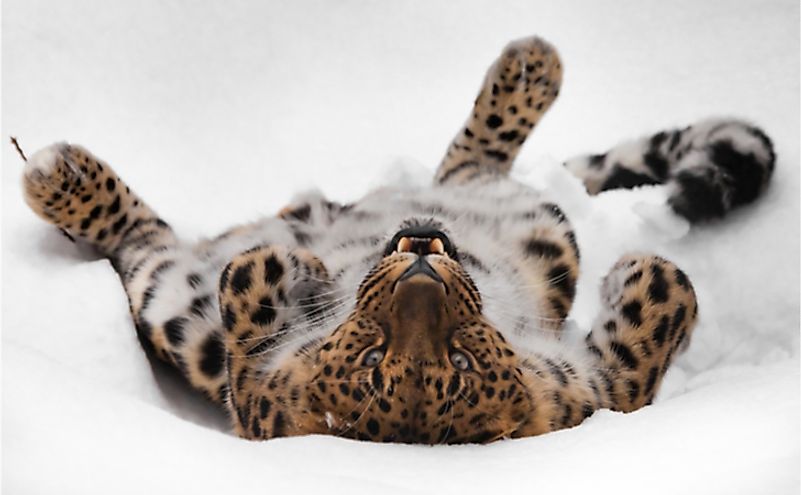
Panthera pardus orientalis is an extremely rare leopard subspecies found in Siberia. It is a critically endangered leopard that is restricted to southeastern Russia's Primorye region and northern China. As of 2015, only around 60 Amur leopards were estimated to survive in the wild. Like the Amur tiger, this leopard subspecies also had a wide historical range stretching from northeastern China into the Korean Peninsula. Today, it lives in only about 20% of its former range. Poaching of the leopard and its prey, deforestation in its range, and a reduced gene pool have decimated populations of this leopard.
5. Siberian Husky -
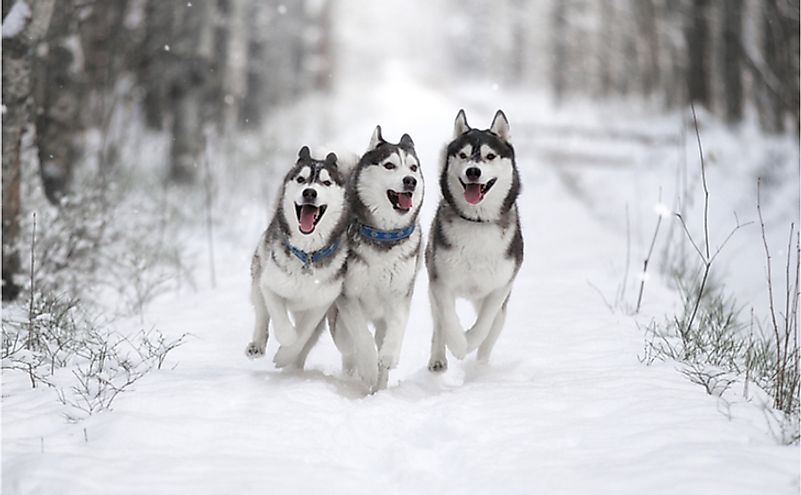
Although not a wild species, the Siberian husky deserves a mention on this list as it is integral to the Siberian culture and way of life. It is a medium-sized working dog breed of the Spitz genetic family. It has erect triangular ears and a thick furry coat. The breed originated in Northeast Asia. The Chukchi people of Siberia breed these dogs for guarding, sled-pulling, and companionship.
4. Siberian Musk Deer -
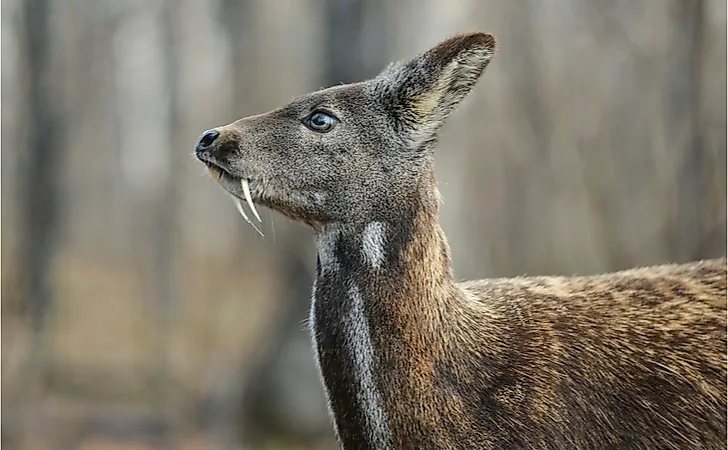
The Moschus moschiferus is found in the taiga in southern Siberia as well as parts of Mongolia, Korean Peninsula, and Manchuria. The species can run extremely fast to escape its predators. Its small size also allows it to hide from its predators. However, despite these adaptations, the musk deer has been unable to protect itself from humans. It is a heavily poached species. Its musk gland is in great demand leading to a precipitous drop in its global population. IUCN labels it as a vulnerable species.
3. Eurasian Lynx -
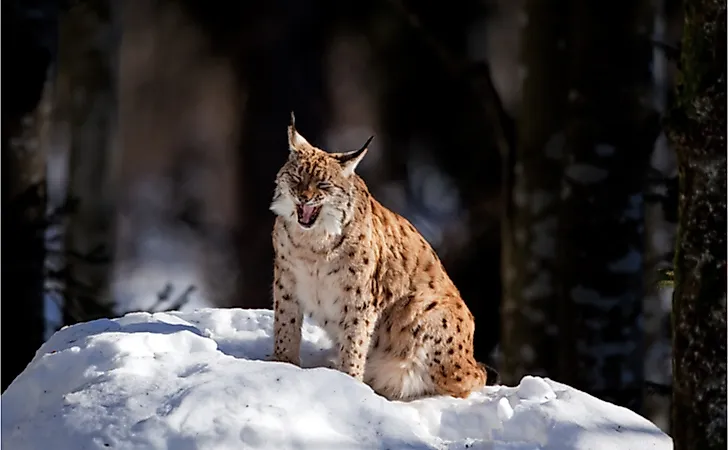
The Lynx lynx is a medium-sized wild cat ranging from Europe's northern, central, and eastern parts to Central Asia and Siberia. Its range also extends south to the Tibetan Plateau and the Himalayas. Thelynx lives in the boreal and temperate forests and is found up to an altitude of 5,500 m. Although the species is enlisted as Least Concern on the Red List, it is threatened by habitat loss, poaching, and food scarcity.
2. Long-tailed Goral -
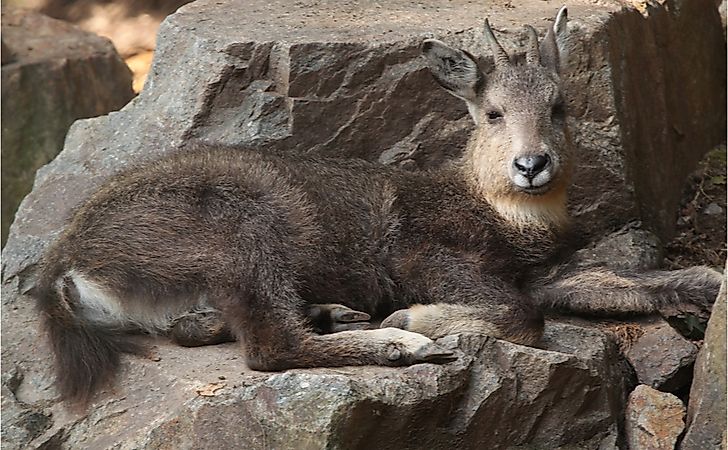
Also known as Amur goral, Naemorhedus caudatus is an ungulate species found in the mountainous terrain of northern and eastern Asia in Russia, China, and Korea. IUCN enlists the species as vulnerable. High elevations with steep, rocky cliffs are the preferred habitat of these animals. They are browsers that feed on grasses, nuts, fruits, etc. The long-tailed goral is heavily poached, primarily for sustenance hunting. It is hoped that sustainable ecotourism would help generate income for the locals that would make it unnecessary to exploit the goral population any further.
1. Polar Bear -
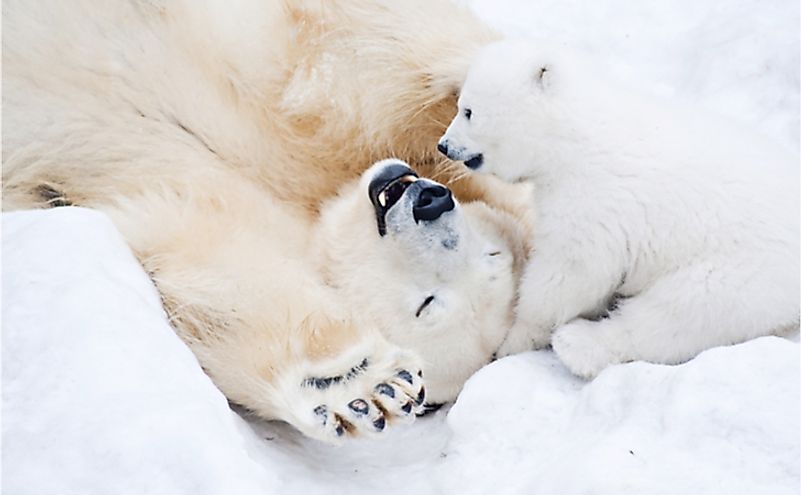
Siberia has no dearth of charismatic species and the polar bear is another addition to this list. The Ursus maritimus is a hyper carnivorous bear found within the Arctic Circle. The Arctic Ocean and its surrounding landmasses and seas make up the habitat of this species. The polar bear is well adapted to survive the extreme temperatures of its habitat, swim in the cold seas, and catch seals, its main prey. Climate change, however, is their biggest threat. In June 2019, a report of a starving and exhausted polar bear straying into a city in Russia's northern Siberia went viral across the world. It became a symbol of the adverse effects of climate change on wildlife. It is predicted that with rising temperatures and sea ice melting, the polar bears will be cornered into smaller habitats that will ultimately lead to their demise.











